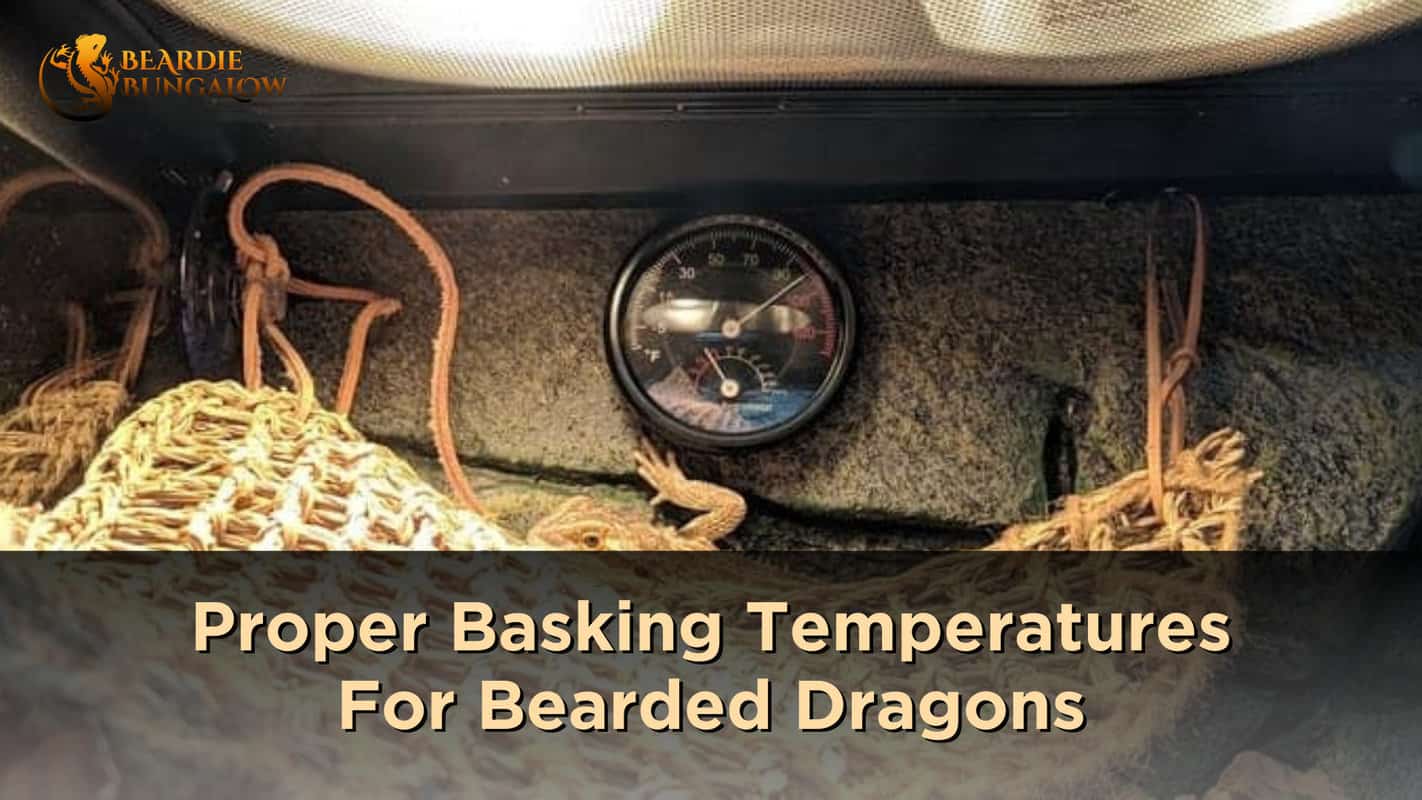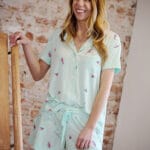Imagine a reptile haven where your bearded dragon basks under a warm “sun,” relaxes in comfortable shade, and explores a refreshing cool zone. This isn’t a dream; it’s a reality you can create by mastering the art of the thermal gradient. This guide unveils the secrets to establishing ideal temperature zones for your scaly friend, ensuring their health, happiness, and overall well-being.
Mastering Bearded Dragon Temperatures
Bearded dragons, being ectothermic, rely entirely on their environment for temperature regulation. A proper “thermal gradient” within their enclosure is crucial for everything from digestion and immunity to mood. Let’s explore how to create the perfect climate.
Crafting the Perfect Climate Zones
Your dragon’s enclosure should mimic their natural habitat with distinct temperature zones:
Basking Zone (Hotspot): This is their personal sunbathing spot, reaching surface temperatures of 95-110°F (35-43°C). This aids digestion and vitamin D3 production, vital for calcium absorption.
Ambient Zone (Warm Side): The general living area on the warm side, maintained at 80-85°F (26-29°C), allows comfortable exploration without overheating.
Cool Zone (Retreat): A cooler escape at 75-80°F (24-26°C) allows your dragon to regulate its temperature and avoid overheating. This gradient empowers them to choose their ideal microclimate.
Age-Specific Temperature Adjustments
Like human children, bearded dragons have varying temperature needs throughout their lives:
| Age Group | Basking Zone | Ambient Zone | Cool Zone |
|---|---|---|---|
| Baby (0-6 months) | 95-110°F (35-43°C) | 80-85°F (26-29°C) | 75-80°F (24-26°C) |
| Juvenile (6-12 months) | 95-100°F (35-38°C) | 80-85°F (26-29°C) | 75-80°F (24-26°C) |
| Adult (1+ year) | 90-93°F (32-34°C) | 80-85°F (26-29°C) | 75-80°F (24-26°C) |
Decreased basking in adults is normal due to more efficient thermoregulation. However, continuous access to the basking zone remains essential.
Nighttime Temperature Drop
Mimicking nature, nighttime temperatures should drop to 70-75°F (21-24°C). Avoid red lights or other heat-emitting bulbs at night; they disrupt sleep cycles. Darkness is crucial for their well-being.
Understanding Brumation
Brumation, a type of reptilian hibernation, occurs in some bearded dragons during cooler months. It’s characterized by reduced activity, decreased appetite, and increased sleep. Brumation isn’t necessary for all individuals. If you suspect brumation, consult a veterinarian for guidance, as it requires careful temperature and humidity management.
Essential Tools and Tips
- Accurate Measurement: Invest in a quality digital thermometer or temperature gun for precise readings. Target the basking spot, warm side, and cool side.
- Regular Monitoring: Check temperatures multiple times daily, especially during seasonal changes.
- Heat Source Adjustment: Adjust heat lamps to maintain the gradient, particularly in colder weather or drafty locations.
- Hiding Spots: Offer various hides in each zone, allowing your dragon to choose their preferred microclimate.
- Troubleshooting: If maintaining temperatures is difficult, review your thermostat settings, heat lamp wattage, and enclosure size. Larger enclosures may need more powerful heating.
By following these guidelines, you’ll create a thriving environment for your bearded dragon, contributing to a long, healthy, and happy life.
Danger Zone: Recognizing & Preventing Cold Stress in Bearded Dragons
While providing adequate heat is essential, understanding the dangers of cold is equally crucial. 65°F (18°C) is the critical threshold for bearded dragons. Prolonged exposure to temperatures below this can trigger a metabolic slowdown, weakening their immune system and increasing susceptibility to illness. Improper brumation can also occur.
Maintaining Optimal Temperatures
Creating a proper thermal gradient within the enclosure is key:
- Daytime: Maintain a basking spot of 95-105°F (35-40°C) and a cool-down area of 75-85°F (24-29°C).
- Nighttime: Allow temperatures to drop to 70-75°F (21-24°C) without supplemental heat. Avoid red bulbs, which disrupt their sleep cycle.
- Juveniles: These dragons (6-18 months) require slightly higher basking temperatures, around 95-100°F (35-38°C).
Observing your dragon’s behavior is critical. Lethargy, loss of appetite, or attempts to escape the enclosure can indicate temperature problems. While these guidelines offer a solid foundation, ongoing research continues to refine our understanding. Staying updated on the latest recommendations and consulting a reptile veterinarian is always advisable.
Optimal Bearded Dragon Temperatures: A Complete Guide
Creating the perfect thermal gradient involves establishing specific temperature zones within the enclosure. This allows your bearded dragon to thermoregulate effectively, mimicking their natural behavior in the wild.
Essential Temperature Zones
- Basking Zone: 95-110°F (35-43°C) for digestion and overall health. Use a basking lamp or ceramic heat emitter. Double-checking with a temperature gun can be beneficial.
- Ambient Temperature: 80-85°F (26-29°C) – the overall enclosure temperature.
- Cool Zone: 71-77°F (22-25°C) for escaping heat and preventing overheating.
Age-Related Adjustments
- Babies: Slightly warmer ambient temperature (80-85°F/26-29°C) and basking up to 110°F (43°C).
- Juveniles/Adults: Slightly cooler ambient temperatures within the general range. Basking temperature remains consistent.
Nighttime Considerations
Avoid supplemental heat and red lights at night, allowing a natural temperature drop for healthy sleep.
Providing a Thermal Gradient
Bearded dragons are ectothermic. A thermal gradient, achieved using a combination of heat sources and a cooler area, allows them to move between temperatures as needed. Ongoing research suggests providing even more variation within the enclosure might further enhance well-being. Use digital thermometers for precise measurements in each zone.
Staying informed about current best practices and consulting with a reptile veterinarian is crucial. Every dragon is unique; observing their behavior helps identify individual needs and ensures their long-term health and happiness.
Debunking the 24/7 Heat Lamp Myth: A Bearded Dragon Lighting & Heating Guide
Bearded dragons don’t need 24/7 heat. While daytime basking requires 95-100°F (35-38°C), nighttime temperatures can safely drop to 70°F (21°C) without supplemental heat. Nighttime heat lamps disrupt their sleep cycle. If supplemental heat is needed in rooms below 65°F (18°C), use a ceramic heat emitter (CHE).
Daytime Essentials
- Basking Spot: 95-100°F (35-38°C) for thermoregulation.
- Cooler End: 75-85°F (24-29°C) to maintain the temperature gradient.
- UVB Lighting: Crucial for vitamin D3 synthesis and calcium absorption, preventing Metabolic Bone Disease (MBD).
Nighttime Essentials
- No Light: Darkness is essential for their sleep cycle.
- Temperature Drop: 70°F (21°C) is beneficial for mimicking natural fluctuations.
- Supplemental Heat (CHE): Only if room temperature falls below 65°F (18°C).
Choosing the Right Equipment
Use thermostats for accurate temperature control. Heat lamps and basking bulbs are suitable for daytime, while CHEs are preferred for nighttime. Ensure all equipment is installed securely to prevent burns.
Long-Term Health Implications
Proper lighting and heating prevent MBD and thermal burns. A temperature gradient allows for both basking and cooler zones. While starter kits offer a basic setup, researching specific requirements ensures your dragon thrives. Ongoing research may further refine our understanding of their needs, making it essential to stay updated and consult with a reptile veterinarian.
Are you suspicious you have been roofied? Quickly learn the many different signs of being roofied. If you have nasal congestion, check out this page to see if images of swollen turbinates match your symptoms.
- Discover Long Black Pepper: Flavor & Health Benefits - April 25, 2025
- Shocking Twists: The Grownup Review: Unreliable Narration - April 25, 2025
- A Quiet Place Book vs Movie: A Deep Dive - April 25, 2025

















2 thoughts on “The Complete Guide to Bearded Dragon Temperatures: Creating the Ideal Thermal Gradient”
Comments are closed.